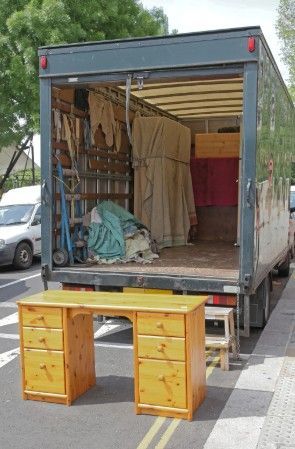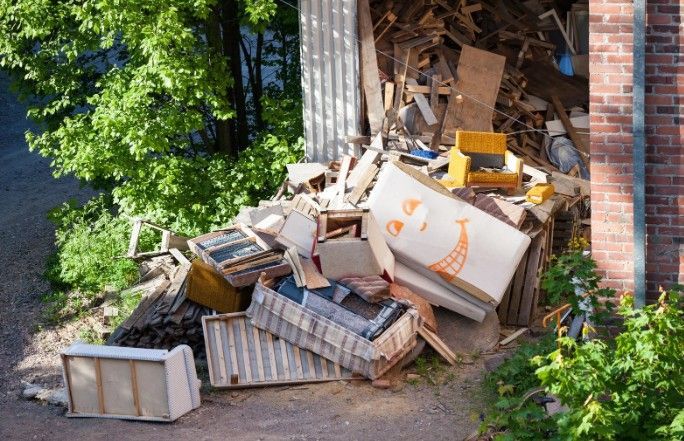How to Get Rid of Old Furniture in a Sustainable Way
Getting rid of old furniture isn’t as simple as dragging it to the curb and hoping it disappears. In today’s world, where environmental awareness is becoming more important than ever, how you dispose of your furniture matters. Tossing that old couch or broken table into a landfill contributes to the growing problem of waste and pollution. But there’s good news you have options. Sustainable furniture removal isn’t just possible; it’s surprisingly easy when you know the right steps. Let’s dive into how you can responsibly part ways with your old furniture while keeping the planet in mind.
Sustainable Furniture Removal Matters
Every year, millions of tons of furniture end up in landfills. Sofas, chairs, tables you name it they’re piling up in waste sites and taking years (sometimes decades) to break down. Furniture waste isn’t just about volume; it’s about the materials. Many pieces are made from wood, metal, and plastics, which can release harmful chemicals into the environment as they decompose.
Beyond the environmental impact, there’s also the issue of overproduction. Fast furniture — cheap, mass-produced items — creates a vicious cycle of buying and discarding. The more furniture we throw away, the more resources are used to create new pieces. Sustainable disposal helps reduce this cycle, minimizes waste, and gives valuable materials a second life.
Assess the Condition of Your Furniture

Before you decide how to get rid of your furniture, take a moment to carefully assess its condition. Understanding what shape it’s in will help you determine the best course of action. Not all furniture deserves to be sent to the junkyard — some pieces still have life left in them, while others might need a creative touch or a recycling plan. Start by categorizing your furniture into three main groups: like new, functional but worn, and broken or damaged.
If the piece looks nearly brand new or is in excellent shape, you might want to resell or donate it. Functional but worn pieces with scratches, dents, or faded fabric could be great candidates for donation or a creative upcycling project. If the furniture is broken, damaged, or missing pieces, recycling might be the best option. By understanding where your furniture stands, you can take a more thoughtful, sustainable approach to getting rid of it while minimizing waste.
Donate What You Can
If your furniture is still in good condition, donating it is one of the most eco-friendly and socially beneficial options. Charitable organizations, thrift stores, and furniture banks often accept gently used furniture, giving it a second life while helping those in need. Some places, like Goodwill and Habitat for Humanity, even offer free pickup services, making it easier than ever to donate. Homeless shelters, churches, and community centers also welcome furniture donations to help furnish spaces for people getting back on their feet.
Donating not only keeps furniture out of landfills but also makes a meaningful difference in someone else's life. That old couch or dining table could bring comfort and functionality to a family in need. Plus, the feel-good factor of knowing your unwanted furniture is helping someone else is hard to beat. So, before you toss that chair to the curb, consider giving it a second life through donation.
Try Selling It
If your furniture is in good shape and you’d like to make some extra cash, selling is a smart option. With the rise of online marketplaces, finding a buyer has never been easier. Platforms like Facebook Marketplace, Craigslist, and OfferUp allow you to reach local buyers quickly, and you can often offload items within days. To increase your chances of a successful sale, take high-quality photos in natural lighting, capturing any unique details or signs of wear. Be honest in your descriptions — including measurements and imperfections helps build trust with buyers.
Setting a fair price based on the item’s condition and original value is key to attracting serious interest. Responding promptly to messages and being flexible with pickup times can also help you close the deal faster. Selling not only clears out your space but also keeps usable furniture circulating within the community, reducing the demand for new manufacturing and lowering environmental impact.
Repurpose and Upcycle
Sometimes, all an old piece of furniture needs is a little creativity to give it new life. Upcycling allows you to transform old, worn-out furniture into something fresh and functional. That wobbly wooden chair? Reinforce the legs and turn it into a plant stand. A scratched-up coffee table? Sand it down and give it a new coat of paint to match your decor.
Old dressers can become stylish bathroom vanities, wooden pallets can be converted into outdoor seating, and even a broken headboard can be repurposed into a decorative wall piece. The possibilities are endless. Upcycling not only keeps furniture out of landfills but also allows you to create one-of-a-kind pieces that reflect your personal style. Plus, it’s cost-effective and satisfying to see something you created come to life.
Recycle What Can’t Be Saved
If your furniture is too damaged or worn to be donated or repurposed, recycling is the next best option. Many cities have bulk waste programs or recycling centers that accept furniture, but it’s important to separate materials beforehand. Wood, metal, and glass are often recyclable, but composite materials, mixed fabrics, and foam padding can be more challenging. Before you drop off your furniture, contact local recycling centers to confirm what they accept.
Some junk removal services specialize in recycling furniture and will handle the breakdown process for you. Separating materials increases the chances that each component will be processed correctly and reused in future products. Recycling furniture reduces landfill waste, conserves natural resources, and helps lower the carbon footprint of furniture production.
Hire an Eco-Friendly Junk Removal Service
When you’ve exhausted all other options or simply don’t have the time or ability to handle furniture removal yourself, a professional junk removal service can help. The key is to choose a company that prioritizes environmentally responsible disposal. Many reputable services will sort through your furniture, donating or recycling as much as possible rather than sending it straight to a landfill.
Look for a company that’s transparent about where the furniture ends up and offers flexible scheduling and fair pricing. Experience handling heavy or bulky items is also a plus. Hiring a professional service takes the stress out of the process and ensures that your unwanted furniture is disposed of in a sustainable way.
Avoid Future Waste with Thoughtful Purchases
Sustainable furniture disposal isn’t just about how you get rid of old pieces — it’s also about being mindful of what you bring into your home in the first place. Investing in high-quality, durable furniture means you’ll need to replace pieces less often, reducing overall waste. Opt for solid wood, metal, and other long-lasting materials over cheap particleboard or plastic.
Look for furniture made from recycled or sustainable materials and support brands that follow eco-friendly production practices. Shopping second-hand or choosing vintage furniture is another great way to reduce your environmental impact while adding character to your space. Thoughtful purchasing choices help create a home filled with pieces that last, minimizing the cycle of buy-and-discard that fuels landfill overflow.
Environmental Impact of Furniture Waste
Furniture waste is a bigger environmental issue than most people realize. Every year, millions of tons of furniture end up in landfills, contributing to deforestation, increased greenhouse gas emissions, and pollution. Many furniture pieces are made with synthetic materials and harmful chemicals like formaldehyde and flame retardants, which leach into soil and water over time, causing long-term environmental damage. Manufacturing new furniture requires natural resources like wood, metal, and petroleum-based plastics, which increases the environmental toll.
By donating, reselling, recycling, and upcycling furniture, you help reduce the demand for new materials, lower carbon emissions from manufacturing and transportation, and support a more circular economy. Sustainable furniture disposal is more than just an eco-friendly choice — it’s a crucial step toward reducing our collective environmental footprint and preserving the planet’s natural resources.
Small Efforts, Big Impact
It’s easy to feel like one person’s choices won’t make a difference, but every small action adds up. Each piece of furniture that’s donated or recycled instead of dumped in a landfill makes a positive impact. Every upcycled table or repurposed chair reduces demand for new materials and minimizes environmental strain. Small changes repeated across communities create a ripple effect that leads to meaningful environmental progress.
When you choose sustainable furniture disposal, you’re not just helping the planet — you’re also inspiring others to make more thoughtful choices. Whether you donate an old dresser, repurpose a headboard, or choose to buy second-hand furniture, your actions contribute to a more sustainable future. Sustainable furniture removal is proof that even small efforts can lead to big results.
Conclusion
When it’s time to say goodbye to old furniture, choosing sustainable disposal methods makes a difference — for the environment and your community. Donating, selling, upcycling, recycling, or using an eco-friendly junk removal service are all ways to handle furniture responsibly. By making thoughtful decisions about what you buy and how you discard, you contribute to a more sustainable future.
If you’re ready to clear out your space without adding to the landfill problem, Priority Junk Removal is here to help. Located at 6091 South Spotswood Street, Littleton, Colorado 80120, they specialize in eco-friendly disposal, ensuring your furniture gets a second life whenever possible. Give them a call at 720-451-1359 or send an email to priorityjunkremoval@gmail.com to schedule a pickup today.











